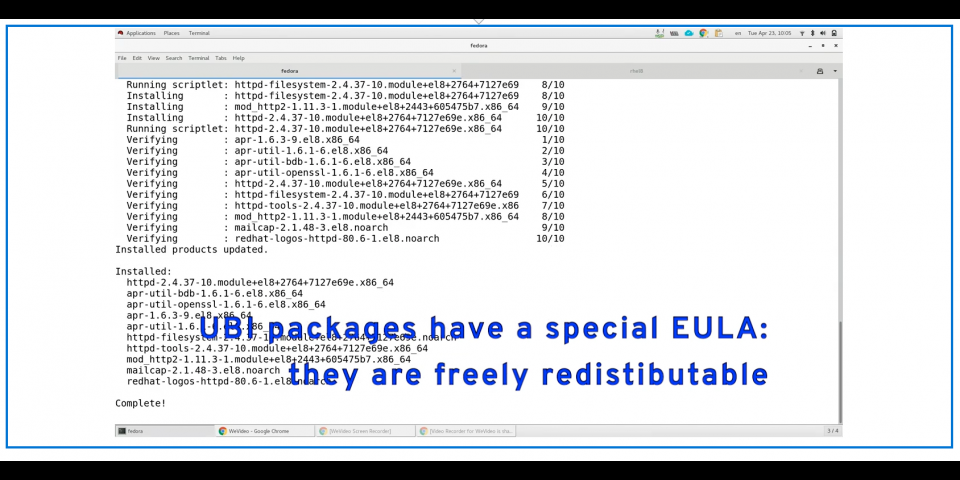When we announced Red Hat Enterprise Linux 8 in May, we also announced that all RHEL 8 base operating systems images, and many new RHEL 7 ones, would be available under the new Universal Base Image End User License Agreement (EULA). If UBI is new for you, this article summarizes UBI, explains why you’d want to use it, and supplies a set of resources to get you started with UBI. And, if you have questions, we just published a brand new UBI FAQ.
What is UBI?
Red Hat Universal Base Images (UBI) are OCI-compliant container base operating system images with complementary runtime languages and packages that are freely redistributable. Like previous RHEL base images, they are built from portions of Red Hat Enterprise Linux. UBI images can be obtained from the Red Hat Container Catalog and be built and deployed anywhere.
And, you don’t need to be a Red Hat customer to use or redistribute them. Really.
What’s included?
The Red Hat Universal Base Image includes three things:
- A set of three base images (Minimal, Standard, and Multi-service) are provided to provide optimum starting points for a variety of use cases. Learn more.
- A set of language runtime images (PHP, Perl, Python, Ruby, Node.js) enable you to start coding right away with the confidence that a Red Hat built container image provides.
- A set of associated YUM repositories/channels include RPM packages and updates that allow you to add application dependencies and rebuild UBI container images anytime you want.
UBI in action: How it works in just 3 minutes
With UBI, you can containerize an app on one platform and share for deploying on another platform. In this video, Scott McCarty does a great job explaining how it works in just three minutes.
https://www.youtube.com/watch?v=VG7Y1mjVIE0
Why should you use UBI?
tl;dr — Saves development time by building a portable app.
Before UBI, you had to package your containerized app for each target that it needed to deploy on. Given this, containers were not really portable like zip or gif files are today. UBI lets you create the image once and deploy anywhere using enterprise-grade packages. The alternative is to use untrusted, unreliable, and/or inferior packages that won’t stand up to enterprise-grade demands. That approach is broken from the start.
Special heads-up for ISVs—Red Hat Container Certification
Customers have gotten nervous about how secure applications are. Red Hat has addressed this by offering container certification which gives confidence to anyone wanting to try and/or use your software. It’s a free service—just join the Red Hat Technology partner program.
Get started
Here are three steps to get started:
- Download from UBI7 or UBI8 from the Red Hat container catalog, and do what Scott has shown in the video above.
- Next, do something with one of the runtime languages: PHP, Perl, Python, Ruby, or Node.js. You'll find these in the catalog, too (separate ones for RHEL 7 or 8).
- Give us feedback; see below for ways to contact us.
Resources
- UBI information page.
- UBI FAQ.
- Email UBI questions and/or feedback to ubi AT redhat DOT com.
- Join the UBI community mailing list and follow UBI discussions.


